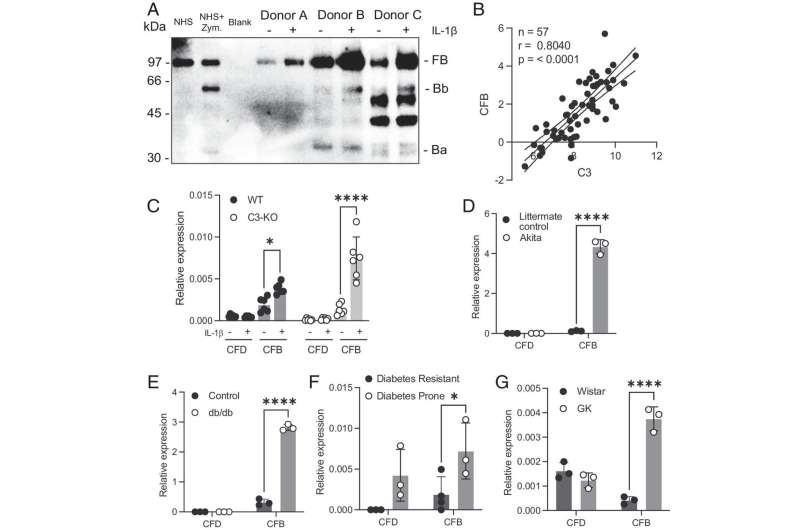This article has been reviewed according to Science X's editorial process and policies. Editors have highlighted the following attributes while ensuring the content's credibility:
fact-checked
trusted source
proofread
Examining the protein that protects insulin-producing cells

Although there are many differences between type 1 diabetes and type 2 diabetes, there are also similarities, such as inflammation of the insulin-producing cells. Researchers at Lund University have studied a protein called C3, which plays a central role in the body's immune system.
The protein is secreted from cells and is found in large quantities in the blood. Previous studies by the same researchers have shown that C3 is also present inside cells and plays an important role there. Now, their latest study in Proceedings of the National Academy of Sciences shows that the protein C3 protects insulin-producing cells from damage and death when it is present inside the cells.
"Much research on diabetes focuses on trying to understand what happens when the insulin-producing cells are destroyed. We have chosen a different approach that aims to understand what protects the insulin-producing cells," says Anna Blom, professor of protein chemistry at Lund University, who led the study.
It is already known that a protein called IL-1B can cause inflammation and damage to insulin-producing cells. The new study now shows that it is intracellular C3 that protects the insulin-producing cells from being damaged by IL-1B.
In the long term, the knowledge about C3 can be used to develop new treatments aimed at protecting insulin-producing cells, such as stem cell therapies for treating type 1 diabetes and type 2 diabetes.
"An objective among many diabetes researchers is to create treatments where stem cells are taken from the patient and converted into insulin-producing cells, which are then transplanted back into the patient. To achieve this, it is important to understand what is needed for the insulin-producing cells to function well."
"If we can increase the production of intracellular C3 in these cells, it may help the cells survive longer so that the treatment can be more effective," says Ben C King, associate professor of inflammation research at Lund University and co-senior author of the study.
Paving the way for new research
Among researchers studying the immune system, there is no consensus on whether C3 plays a significant role inside our cells. Anna Blom hopes that the new study will pave the way for new research that can increase our knowledge about the significance of intracellular proteins in the development of diabetes and other diseases.
"It has long been known that C3 plays a crucial role for the immune system in the bloodstream where it helps white blood cells to engulf infectious microorganisms. Our new study shows that the protein plays a different role when it is located inside the cell. We hope to see similar studies by other research groups that either confirm or contradict our results," says Professor Anna Blom.
About the study
The researchers cultivated insulin-producing cells from rats. Using the gene scissors CRISPR/Cas9, they created cells that either lacked C3 or only produced the intracellular form of the protein. They then found that cells without C3 were more susceptible to the harmful effects of IL-1B, while cells with C3 were protected.
Their experiments on mice showed that insulin-producing cells lacking C3 were at greater risk of damage and death, leading to faster development of diabetes-like conditions. The researchers could also confirm previous findings that intracellular C3 is present in human insulin-producing cells and that levels increase in the presence of IL-1B, particularly in connection with diabetes. This is probably because the protein is trying to protect the insulin-producing cells.
The protective effect can be linked to a protein called FRK. Previous studies by the same research group have shown that C3 interacts with FRK, which is known to contribute to the destruction of insulin-producing cells. In the new study, the researchers conducted experiments that demonstrated that the harmful effect of IL-1B on insulin-producing cells is inhibited when FRK and C3 interact with each other.
More information: Klaudia Kulak et al, Intracellular C3 protects β-cells from IL-1β-driven cytotoxicity via interaction with Fyn-related kinase, Proceedings of the National Academy of Sciences (2024). DOI: 10.1073/pnas.2312621121




















